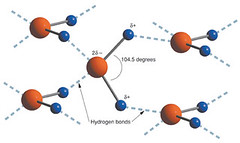![]()
![]()
![]()
Use LEFT and RIGHT arrow keys to navigate between flashcards;
Use UP and DOWN arrow keys to flip the card;
H to show hint;
A reads text to speech;
24 Cards in this Set
- Front
- Back
|
Controlled Experiment |
1 Independent Variable, multiple dependent variables, a control group, run multiple trials, and a large # of test subjects |
|
|
Quantitative Data |
amount of something, measurements |
|
|
Qualitative Data |
Color, texture, smell |
|
|
Independent Variable |
the change in the experiment to effect the dependent variable(s) |
|
|
Dependent Variable |
in an experiment the dependent variable is kept the same |
|
|
Parts of an Atom |
Protons, neutrons, and electrons |
|
|
Covalent Bond |
when an atom shares its electron with another atom |
|
|
Ionic Bond |
when an atom is attracted to another oppositely charged atom |
|
|
How are ions formed? |
when an atom shares or loses an electron |
|
|
Solution |
Ex. iced tea |
|
|
Solvent |
Ex. water (universal solvent, polar)` |
|
|
Solute |
Ex. sugar (polar, able to dissolve into water) |
|
|
Acid |
High H+, Low OH- (Less Than 7)
|
|
|
Base |
High OH-, Low H+ (More than 7) |
|
|
pH |
measures acidity, ion concentration |
|
|
Hydrogen Bonds |
forms from slightly negative oxygen atoms and slightly positive hydrogen atoms |
|
|
Water Molecules Connected By Hydrogen Bonds |

|
|
|
Properties of Water |
Cohesion, adhesion, high specific heat |
|
|
Polar Versus Non-Polar |
Polar has slight positive and negative charged regions and non-polar has no charged regions |
|
|
"Like Dissolve Likes" |
Polar substances dissolves polar substances Non-polar substances dissolves Non-polar substances |
|
|
High Specific Heat |
Ex. water acts as a cooling system inside the body to keep the temperature at 98.6 F |
|
|
Cohesion |
Ex. insects walking on water due to surface tension from cohesion (water sticking to water) so they can access a larger home range |
|
|
Adhesion |
Ex. blood sticking to capillaries inside our bodies which allows blood to travel throughout our body, adhesion (water sticking to other things) makes the blood stick to the tiny walls of the capillary |
|
|
Ice Floating |
ice floats on water because it is less dense than it, including, that the water molecules spread apart so the hydrogen bonds can form |

